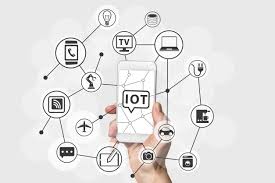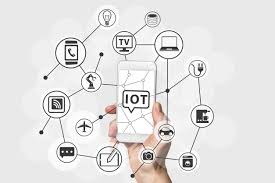
There would be over 31 billion connected Internet of Things (IoT) devices in 2018 globally according to an estimate by business information provider HIS Markit. The analysis says that the driver for this growth would be the demand for intelligent connected devices within commercial and industrial applications.
Between 2018 and 2030, more than half of the number of new connected devices would be accounted for by lighting, industrial automation and building automation segment within the commercial and industrial sector.
“The IoT is not a recent phenomenon, but what is new is it’s now working hand in hand with other transformative technologies like artificial intelligence and the cloud,” said Jenalea Howell, research director for IoT connectivity and smart cities at IHS Markit. “This is fueling the convergence of verticals such as industrial IoT, smart cities and buildings, and the connected home, and it’s increasing competitiveness.”
The analysis ahs also identified four critical drivers for the industry in the near future.
One of them is innovation and competitiveness. The report claims that there would be confusion and fragmentation in the short-term even though a number of duplicative and overlapping wireless solutions like Bluetooth, Wi-Fi, 5G, NB-IoT, LoRa and Sigfox have been attracted by the IoT opportunity. There is scope for standards consolidation in eh near future.
Further, gaining popularity is a hybrid approach to cloud and data center management because companies and organizations are looking to leverage location of data as a competitive advantage. Both off-premises cloud services and on-premises data centers would be used by more and more organizations, claims the study.
Additionally, IoT would be driven by enhancement of economies of scale – furthering adoption to IoT by all sectors of industry, because past investments in IoT applications and M2M (machine-to-machine) forms that basis of 5G. there would be significantly lower costs of IoT due to better coverage, the capacity to function on licensed and unlicensed spectrum and enhanced low-power requirements.
And integral to edge computing deployments would be cellular IoT gateways that helps in WAN connectivity. Increased focus on security for cellular IoT gateways and compute capabilities would be witnessed in 2018 according to the analysis by Markit.
In terms of standardization and security, the industry will witness cybersecurity to become the biggest concern for adopters of IoT. There is enhanced risk for IoT connected devices compared to traditional communications and computing systems because a large number of devices need to be secured. This enhances the cybersecurity risks of IoT deployments.
Another driver for the growth would be innovation in wireless technology. The Markit report says that there is greater integration of IoT platforms. There are over 400 providers of IoT platform at present. There is higher integration of functionality for application using IoT for adopters because integration is being used by many vendors to compete more effectively.
The report further states that as and when it would be possible for IoT app developers to access and leverage data from data stores, and countless deployed sensors, there would be significant innovation.
(Source:www.businesswire.com)
Between 2018 and 2030, more than half of the number of new connected devices would be accounted for by lighting, industrial automation and building automation segment within the commercial and industrial sector.
“The IoT is not a recent phenomenon, but what is new is it’s now working hand in hand with other transformative technologies like artificial intelligence and the cloud,” said Jenalea Howell, research director for IoT connectivity and smart cities at IHS Markit. “This is fueling the convergence of verticals such as industrial IoT, smart cities and buildings, and the connected home, and it’s increasing competitiveness.”
The analysis ahs also identified four critical drivers for the industry in the near future.
One of them is innovation and competitiveness. The report claims that there would be confusion and fragmentation in the short-term even though a number of duplicative and overlapping wireless solutions like Bluetooth, Wi-Fi, 5G, NB-IoT, LoRa and Sigfox have been attracted by the IoT opportunity. There is scope for standards consolidation in eh near future.
Further, gaining popularity is a hybrid approach to cloud and data center management because companies and organizations are looking to leverage location of data as a competitive advantage. Both off-premises cloud services and on-premises data centers would be used by more and more organizations, claims the study.
Additionally, IoT would be driven by enhancement of economies of scale – furthering adoption to IoT by all sectors of industry, because past investments in IoT applications and M2M (machine-to-machine) forms that basis of 5G. there would be significantly lower costs of IoT due to better coverage, the capacity to function on licensed and unlicensed spectrum and enhanced low-power requirements.
And integral to edge computing deployments would be cellular IoT gateways that helps in WAN connectivity. Increased focus on security for cellular IoT gateways and compute capabilities would be witnessed in 2018 according to the analysis by Markit.
In terms of standardization and security, the industry will witness cybersecurity to become the biggest concern for adopters of IoT. There is enhanced risk for IoT connected devices compared to traditional communications and computing systems because a large number of devices need to be secured. This enhances the cybersecurity risks of IoT deployments.
Another driver for the growth would be innovation in wireless technology. The Markit report says that there is greater integration of IoT platforms. There are over 400 providers of IoT platform at present. There is higher integration of functionality for application using IoT for adopters because integration is being used by many vendors to compete more effectively.
The report further states that as and when it would be possible for IoT app developers to access and leverage data from data stores, and countless deployed sensors, there would be significant innovation.
(Source:www.businesswire.com)














